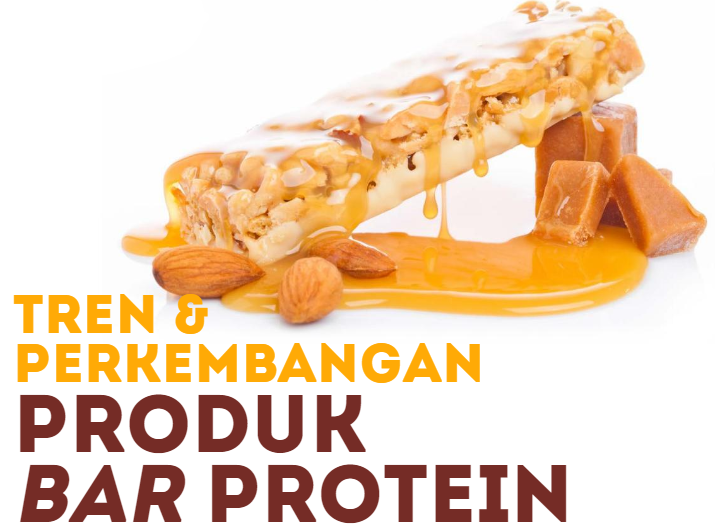Protein Bar Product Trends and Development

The global market for snacks according to Mintel Market Data (December,2020) shows an increasing positive trend with a value of 174 billion US dollars in 2019 and has an average annual growth rate (CAGR) of 3,9% until 2023. At the volume level, China occupies the first rank of sales of snack food products, followed by the United States, India, Japan and Mexico.
The consumption of snacks is currently experiencing a shift from its initial nature as a snack. Now flexible snack products can be enjoyed at any time. Expectations for snacks have also changed where as many as 54% of global consumers say snacks can support their nutritional needs. "Not surprisingly seeing this change, awareness of a healthier life is also driving 51% of global consumers to swap their consumption of 'traditional' snacks like chocolate and confectionery for snacks that are high in protein or low in sugar," explained Senior Director, Product Strategic Management Glanbia Nutritional, Brad Meyers in Live Webcast-Raise the bar: Rise of high-protein bars in Asia held by Buhler and Glanbia Nutritional on January 21, 2021.
Perceptions of Health and protein
A survey conducted by Health Focus International (May, 2019), shows that consumers around the world are more concerned with reducing or staying away from products with artificial sweeteners, reducing sugar consumption, and increasing or increasing consumption. Fiber, whole grains, and protein in their current diet. The desire to consume high protein products has also continued to increase during the period 2005-2019.
As many as 41% of consumers want protein content in their consumption patterns. Protein is an important component because of its very broad benefits in various aspects. Protein contributes benefits to various physical aspects such as bone health, supports hair, skin and nail health. In other aspects such as mental aspects, protein is also useful to help supply nutrition to the brain and energy for mental.
"With a myriad of benefits, 70% of respondents to a survey said that if snacks have a category with more protein added, they will immediately categorize the product as healthier," added Meyers. Specifically, protein bar snacks are also experiencing rapid growth compared to other types of bars. "Currently, bars are the preferred form of snack food because of their characteristics which have a stable shelf life, are flexible for consumption and snacks with high protein content," continued Meyers.
Protein bars grew by 37% of total bar products in the United States market. The level of protein content in bar products in America is divided into three segmentation categories, namely at levels less than 10%, 10-19%, and more than 20%. Bar products have the fastest growth with a content of more than 10%.
In Asia Pacific, consumption of high-protein bars is no less attractive than the United States. Nearly 1/3 of the snacks released in the Asia Pacific region last year had characteristics with high protein / additive claims. Mintel's data also show that apart from add / high protein, another claim that Asia Pacific consumers are passionate about is vegan, with added / high fiber, low / reduced sugar, as well as functional claims for digestive health.
Protein bar product formulation considerations
Designing a high protein bar product formulation is both challenging and considerate. Research Manager, Asia Pacific Glanbia Nutritional, He Xiayou, on the same occasion said that to create a good bar, it is necessary to create a good bar, a balance is needed in all related aspects. These aspects are the taste which includes the level of hardness, cut ease, mouthfeel, moisture, crunchiness, flavour to the type of bar product.
Another aspect is nutrition which includes components of protein, fat, syrup, fiber, coatings, to vitamins and minerals. Do not forget, the next aspect is the shelf life which includes the browning process to water activities. "The most important and basic is knowing consumer preferences for the desired bar product. After that, it is only formulated with a balanced level, so that a final product is obtained that fulfil all the desired aspects, "said Xiayou. Each ingredient or ingredient used will have its own properties, including protein, therefore understanding material knowledge is also very important because it affects the profile of the final product to be produced
Source : FoodReview Indonesia Vol XVI
Related Article


